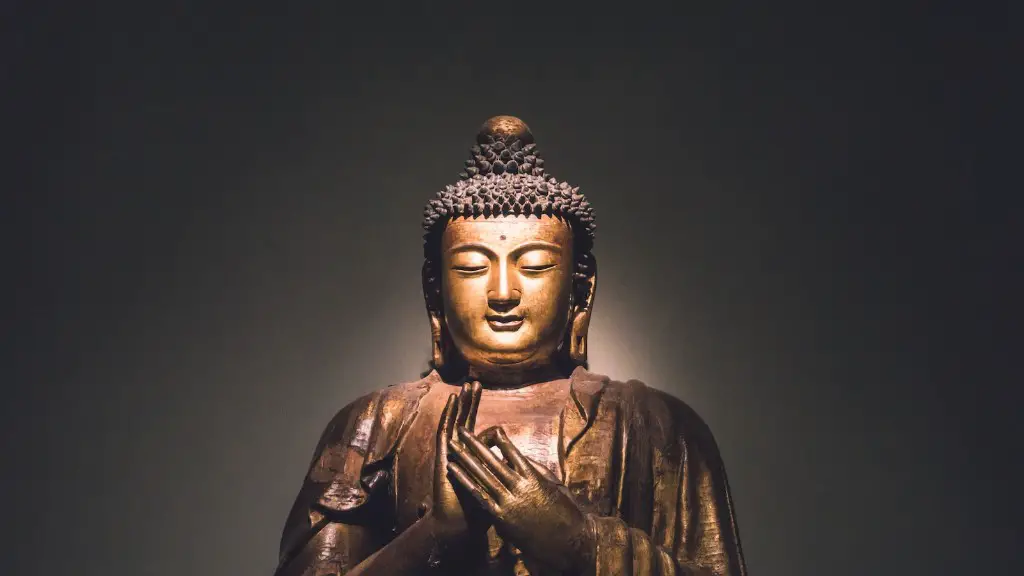Definition and Origin of Yogas in Hinduism
Yoga is a spiritual practice that originated in Hinduism and is now embraced by many religions worldwide, including Christianity, Islam and Buddhism. In Hinduism, yoga has always been an integral part of a spiritual disciple’s path and generally refers to a range of practices which include spiritual, physical and mental exercises. Yoga in Hinduism is divided into 4 main types: Raja, Karma, Jnana and Bhakti. Each style of yoga has its own unique benefits to offer and practitioners will usually choose one of the four styles to practice, depending on their own spiritual and personal journey.
Raja Yoga
Raja yoga is a practice that is focused on meditation and contemplation through the use of asanas (postures). Raja (royal) yoga is also referred to as “classical yoga”, and is the most popular form of yoga in the West, due to its focus on physical exercise. Raja yoga focuses on cultivating inner stillness, the control of consciousness and superior understanding of the nature of reality. Meditation, concentration and mindfulness are the main characteristics of Raja yoga and are the most powerful tools for achieving inner peace and enlightenment.
Karma Yoga
Karma yoga is the practice of performing actions to support and maintain a spiritual life. It is believed that when a person undertakes actions with a non-attached attitude, their actions will be beneficial both to their souls, as well as to their living environment. Karma yoga is more than an individual spiritual practice; it is also a set of ethics and responsibilities for the whole community.
Karma yoga attempts to remove the false ego, to recognize the unity between the self and all of creation, and to affirm and benefit the life force of all. It tells us that all our actions should have a positive effect on others, and be performed with truth, commitment and dedication. In essence, karma yoga shows us the importance of seeking the highest cosmic truth, as well as the importance of contributing to the world around us.
Jnana Yoga
Jnana yoga is the path of knowledge that allows the practitioner to gain inner wisdom and experience the divine within. It emphasizes the importance of gaining knowledge through direct experience, study and disciplined contemplation of the scriptures. Jnana yoga requires a spiritual teacher, as well as careful study of the Vedanta (Hindu scripture).
Jnana yoga is driven by the pursuit of knowledge and the understanding of the true nature of reality. Practitioners use scriptures, proper reasoning and contemplation to gain knowledge, inner peace and spiritual liberation. The goal of Jnana yoga is enlightenment, the highest state of consciousness attainable.
Bhakti Yoga
Bhakti yoga, also known as “devotional yoga”, is a spiritual practice of cultivating love and devotion to a higher power. It involves cultivating love, faith and devotion to a spiritual teacher and is often accompanied by chanting, singing and prayer. Bhakti yoga is the practice of surrendering to a higher power and is about cultivating a relationship with that power.
Bhakti yoga aims to cultivate love, devotion and surrender through chanting, prayer, singing and meditation. It relies on the notion that surrender to the divine can lead to spiritual liberation and enlightenment. Many people find it easier to practice bhakti yoga than other forms of yoga, as its focus on a higher power gives one something to lean on while in the midst of darkness and suffering.
The Benefits of Practicing the Different Yogas in Hinduism
Each type of yoga offers its own unique benefits and should be practiced with the intention of personal spiritual growth. It is important to understand that each type of yoga is part of a greater spiritual journey and should not be seen or practiced in isolation. The yogas should be used to cultivate inner-growth and should not be used as a tool to gain external rewards or recognition.
Overall, yoga in Hinduism offers practitioners physical, mental and spiritual benefits. From Raja yoga’s focus on inner stillness and mindfulness, to Bhakti yoga’s cultivation of love and devotion, there is something for everyone. Practicing any of the four yogas in Hinduism can help to deepen one’s understanding of the divine and brings inner peace, clarity and spiritual bliss.
The Impact of Practicing Yogas on One’s Life
The practice of yoga in Hinduism can have a profound impact on one’s life. It can help to lead to greater self-understanding and acceptance, improve physical and mental health, and foster a deep spiritual connection. Yoga encourages unity and understanding between different faiths, which can lead to harmonious and fulfilling relationships with the world around us.
For those looking for something more than just the physical benefits of yoga, the practice of yogas in Hinduism can offer a deep and meaningful spiritual journey. By engaging with the various yogas, practitioners can gain a greater understanding of their own innermost self and discover a greater purpose in life.
The Interconnection between the Different Yogas in Hinduism
It is important to remember that each type of yoga is interlinked with the other and forms a greater whole.Yogic practices go beyond the physical postures and, although the four yogas are distinct, they all lead to inner liberation and happiness. For those seeking a meaningful spiritual practice, all of the yogas in Hinduism can be used as a powerful tool to connect with the divine and unlock our potential for growth and transformation.
The Ultimate Goal of Practicing Yogas in Hinduism
The ultimate goal of practicing yogas in Hinduism is enlightenment. This is the highest state of consciousness that can be achieved and allows one to experience the highest truth. Enlightenment is the union with the divine, and is sought after by practitioners of the yogas. It brings inner peace, liberation and freedom, and is the goal of the four yogas in Hinduism.
Conclusion
Yoga in Hinduism is an ancient spiritual practice that has many different forms. Each type of yoga offers its own unique benefits, but all four together can be used as powerful tools to cultivate inner knowledge and experience the divine within. When practiced with focus and dedication, the four yogas can lead to spiritual liberation and enlightenment.


